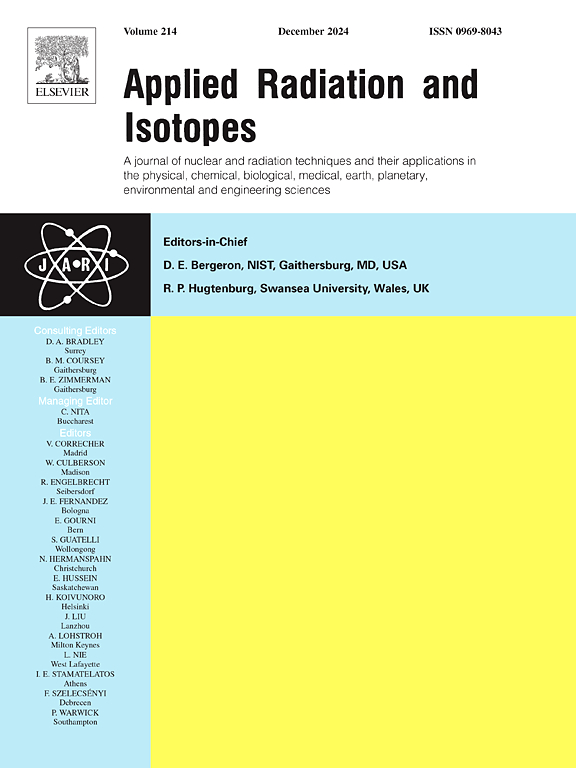MRI放射组学联合delta放射组学模型预测局部晚期直肠癌患者新辅助放化疗后病理完全缓解:一项多机构研究
IF 1.6
3区 工程技术
Q3 CHEMISTRY, INORGANIC & NUCLEAR
引用次数: 0
摘要
目的建立并验证磁共振成像(MRI)放射组学联合delta放射组学和临床信息(C)预测局部晚期直肠癌(LARC)新辅助放化疗(nCRT)后病理完全缓解(pCR)的模型。方法回顾性分析198例LARC患者在nCRT前后行MRI检查的资料。从ncrt前后的弥散加权成像(DWI)和t2加权成像(T2WI)图像中提取MRI放射组学特征。使用最小绝对收缩和选择算子(LASSO)和主成分分析(PCA)算法选择最优预测特征。我们构建了以下模型:4个单模态放射组学模型:DWI-post、DWI-pre、T2-post、T2-pre; 2个δ -放射组学模型:DWI-delta、T2-delta; 4个多模态融合模型:DWI-post + DWI-pre、DWI-post + DWI-delta + T2-delta、DWI-post + DWI-delta + T2-delta、DWI-post + DWI-delta + T2-delta + c。这些模型使用决策树(DT)、随机森林(RF)、支持向量机(SVM)和极端梯度增强(XGBoost) 4种机器学习分类器开发。结果DWI-post + DWI-delta + T2-delta多模态融合模型预测pCR效果最佳,曲线下面积(AUC)为0.879,显著高于单模态DWI-post(最优AUC = 0.824)、DWI-pre(最优AUC = 0.836)和delta-radiomics模型DWI-delta(最优AUC = 0.841)、T2-delta(最优AUC = 0.837)。在大多数模型中,XGBoost分类器表现出比其他分类器更好的预测性能。在外部验证集中,DT分类器和PCA特征选择的DWI-post + DWI-pre模型的AUC最高,为0.754,SVM分类器和LASSO特征选择的DWI-post + DWI-delta + T2-delta + C模型的AUC次优,为0.734。结论多模态融合预测模型明显优于传统的单模态预测模型。该模型可作为LARC患者个性化治疗的可靠、无创工具。本文章由计算机程序翻译,如有差异,请以英文原文为准。
MRI radiomics combined with delta-radiomics model for predicting pathological complete response in locally advanced rectal cancer patients after neoadjuvant chemoradiotherapy: A multi-institutional study
Purpose
To construct and validate a magnetic resonance imaging (MRI) radiomics combined with delta-radiomics and clinical information (C) model for predicting pathological complete response (pCR) in patients with locally advanced rectal cancer (LARC) after neoadjuvant chemoradiotherapy (nCRT).
Methods
A total of 198 patients with LARC who underwent MRI before and after nCRT were retrospectively enrolled in this multi-institutional retrospective study. MRI radiomics features were extracted from pre- and post-nCRT diffusion weighted imaging (DWI) and T2-weighted imaging (T2WI) images. The least absolute shrinkage and selection operator (LASSO) and principal component analysis (PCA) algorithm were used to select the optimal predictive features. We constructed the following models, four single-modal radiomics models: DWI-post, DWI-pre, T2-post, T2-pre, two delta-radiomics models: DWI-delta, T2-delta and four multi-modal fusion models: DWI-post + DWI-pre, DWI-post + DWI-delta, DWI-post + DWI-delta + T2-delta, DWI-post + DWI-delta + T2-delta + C. The models were developed using four machine learning classifiers, including Decision Tree (DT), random forest (RF), support vector machine (SVM), and extreme gradient boosting (XGBoost).
Results
The multi-modal fusion model DWI-post + DWI-delta + T2-delta achieved the best performance with an area under the curve (AUC) of 0.879 for predicting pCR, which was significantly higher than that of the single-modal model DWI-post (optimal AUC = 0.824), DWI-pre (optimal AUC = 0.836) and the delta-radiomics model DWI-delta (optimal AUC = 0.841), T2-delta (optimal AUC = 0.837) in the internal validation sets. XGBoost classifier showed better prediction performance than the other classifiers in the most models. The DWI-post + DWI-pre model with DT classifier and PCA feature selection achieved the highest AUC of 0.754 and the DWI-post + DWI-delta + T2-delta + C model with SVM classifier and LASSO feature selection achieved the suboptimal AUC of 0.734 in the external validation sets.
Conclusion
The multi-modal fusion model significantly outperforms conventional single-modal prediction models. The model could be used as a reliable and noninvasive tool for the personalized therapy in LARC patients.
求助全文
通过发布文献求助,成功后即可免费获取论文全文。
去求助
来源期刊

Applied Radiation and Isotopes
工程技术-核科学技术
CiteScore
3.00
自引率
12.50%
发文量
406
审稿时长
13.5 months
期刊介绍:
Applied Radiation and Isotopes provides a high quality medium for the publication of substantial, original and scientific and technological papers on the development and peaceful application of nuclear, radiation and radionuclide techniques in chemistry, physics, biochemistry, biology, medicine, security, engineering and in the earth, planetary and environmental sciences, all including dosimetry. Nuclear techniques are defined in the broadest sense and both experimental and theoretical papers are welcome. They include the development and use of α- and β-particles, X-rays and γ-rays, neutrons and other nuclear particles and radiations from all sources, including radionuclides, synchrotron sources, cyclotrons and reactors and from the natural environment.
The journal aims to publish papers with significance to an international audience, containing substantial novelty and scientific impact. The Editors reserve the rights to reject, with or without external review, papers that do not meet these criteria.
Papers dealing with radiation processing, i.e., where radiation is used to bring about a biological, chemical or physical change in a material, should be directed to our sister journal Radiation Physics and Chemistry.
 求助内容:
求助内容: 应助结果提醒方式:
应助结果提醒方式:


